New Flooring for Home Renovations – Tips for Success
With so many flooring options, choosing the right one for your home can be overwhelming. In this article, we’ll provide you with some essential flooring tips to ensure success in your home renovation project.
August 19, 2024 | By Bruce Product Expert
Choosing New Flooring: Where to Begin?
The first step in choosing new flooring for your home renovation is to consider the functionality and style of your space. Think about the room’s purpose and the amount of foot traffic it receives. Are you looking for flooring that can withstand heavy use, or prefer something more aesthetically pleasing
You also need to consider the climate in your area. For example, some flooring materials may not hold up well in high humidity or extreme temperatures.
Additionally, consider how the new flooring will complement the other elements in the room, such as furniture and wall colors. You want to ensure that your flooring choice will integrate seamlessly with your design vision. It should enhance the overall ambiance of the space.
Consider Your Lifestyle and Budget
Choose new flooring that aligns with your lifestyle and budget. For example, if you have kids or pets, you may want to avoid carpets that can easily stain and be challenging to clean. Instead, consider more durable options like laminate or vinyl that offer easy cleanup and resistance to wear and tear.
Don’t focus on initial costs. Consider the long-term value and how often you need to replace or repair the flooring. Laminate may cost less initially, but it will last only 15-25 years. Solid hardwood flooring costs more upfront but may never need replacement as you can refinish the surface.
If you have a limited budget, plenty of affordable flooring options can still elevate the look of your home. For instance, luxury vinyl tile (LVT) can offer the look of hardwood or stone flooring at a fraction of the cost. In addition, LVT is water-resistant and durable.
You must balance cost and quality to ensure a wise investment in your home’s future.
Keep Up with the Trends
Another factor to consider when choosing new flooring is trends.
You don’t have to follow every trend, especially if you think it’s short-lived. But, it can pay to know what’s popular in the market and how it can enhance the value of your home. That’s especially true if you plan on selling your home soon.
Some current flooring trends include sustainable and eco-friendly materials, bold patterns and colors, and natural finishes. Trends like wide plank hardwood floors and distressed surfaces can create a modern yet timeless feel in your home.
Also, consider technological advancements in flooring. Companies like Bruce® today offer waterproof hardwood and engineered hardwoods featuring densified wood like Dogwood®. The pet-friendly flooring is 4X more scratch-resistant and 6X more dent-resistant than typical hardwood.
Flooring Types: What Are Your Options?
Today, you have an incredible variety of flooring options. Each has its pros and cons. Here are some of the most popular flooring options to consider for your home renovation:
Hardwood Flooring
Solid hardwood flooring is a classic and timeless option that can add warmth and elegance to any room. It comes in various wood species, colors, and finishes, allowing you to choose the best style.
Hardwood flooring is durable and easy to maintain, making it an ideal choice for high-traffic areas. Another advantage is that you can sand and refinish it multiple times over its lifespan. So, you can rejuvenate the flooring without a complete replacement.
Hardwood floors can be an excellent investment for your home, as they tend to increase property value. They also offer a hypoallergenic surface, a plus for allergy sufferers, as they don’t harbor dust and allergens like carpets can.
Engineered Hardwood
Engineered wood flooring is a close ally to solid hardwood flooring and delivers the same beauty and durability. Its top layer uses real wood, such as genuine oak, hickory, or maple flooring.
However, engineered hardwood has a compressed core using plywood or high-density fiberboard (HDF). That layer helps reduce concerns about expansion and contraction, making engineered hardwoods water-resistant.
Engineered hardwood flooring also costs somewhat less than solid wood floors.
Laminate Flooring
Laminate is a budget-friendly flooring option that mimics the appearance of hardwood. It uses composite wood pressed together and topped with an image of wood or stone. The flooring is durable, easy to maintain, and has various designs and colors. It also resists fading and scratching, making it a practical choice for busy households.
One of the advantages of laminate flooring is its ease of installation. Many laminate products come with click-lock designs that allow for floating floor installation. That makes it an easy weekend project for DIY enthusiasts. However, laminate is prone to water damage, making it less suitable for moist areas like bathrooms and basements.
Vinyl Flooring
Vinyl flooring is a versatile and affordable option resembling hardwood, tile, or stone. Indeed, modern vinyl flooring offers a realistic look and texture that closely mimics natural materials. Vinyl comes in numerous forms, including luxury vinyl planks and tiles, sheets, and rigid core.
The synthetic flooring typically includes four layers:
A wear layer that provides scratch and stain resistance.
A print layer that mimics natural materials like stone, ceramic, or wood.
The core layer that adds stability to the flooring.
An underlayment layer for insulation, cushioning, and sound absorption.
Vinyl flooring is water-resistant, making it an excellent choice for kitchens, bathrooms, and basements. The flooring is also easy to install, making it a popular option for DIY home renovation projects.
Vinyl is comfortable underfoot and typically includes sound-dampening properties. These features make it an excellent choice for second-story rooms or apartments where noise reduction is a priority.
Tile Flooring
Tile flooring is popular for bathrooms, kitchens, and other areas with water concerns. It comes in various materials, including ceramic, porcelain, and natural stone. You can also get engineered stone tile that closely imitates natural stone. However, it costs substantially less and is easier and faster to install.
Tile flooring is highly durable, easy to maintain, and, with its endless design options, can add a unique touch to any room.
When selecting tile flooring, consider the hardness and slip resistance, especially for wet areas. Porcelain tiles, for example, are rugged and water-resistant, making them suitable for indoor and outdoor use.
Natural stone tiles, such as marble or slate, add a luxurious and distinctive appearance to any room. However, they generally require more maintenance to preserve their beauty.
Flooring Ideas to Elevate Your Home Renovation
You should now have a better notion of flooring options. So, let’s explore some flooring ideas to elevate your home renovation
Go for a Rustic Look with Reclaimed Wood
Consider using reclaimed wood as flooring in your home for a unique and rustic look. Typically sourced from old barns or factories, reclaimed wood has a rich and weathered appearance. Because it repurposes existing materials, it’s also a sustainable option. Reclaimed wood floors provide a sense of history and character that new materials cannot replicate.
Moreover, each reclaimed wood is unique, offering distinct textures, patterns, and tones. This can create a one-of-a-kind floor that becomes the centerpiece of a room. Additionally, reclaimed wood is typically stronger and more durable than new lumber. It comes from old-growth trees, which can add to the longevity of your flooring.
New flooring options like Bruce’s Barnwood Living™ offer the vintage charm of reclaimed barnwood. Bruce curated the collection with Mark Bowe, who is famous for Barnwood Builders.
Add a Pop of Color with Patterned Tiles
If you want to add color and personality to your space, consider using patterned tiles for your flooring. They come in various designs and colors; you can mix and match them to create a unique and eye-catching look.
Patterned tiles aren’t just for floors. You can use them to create stunning backsplashes in kitchens or feature bathroom walls. When using bold patterns, it’s wise to balance them with more subdued elements in the room to avoid overwhelming the space. Also, high-quality sealants can protect the tiles and preserve their vibrant colors.
Try a Combination of Flooring Materials
Who says you have to stick to one type of flooring? Mixing and matching different flooring types can create a stunning and dynamic look in your home.
For example, you can use hardwood flooring in your living room and tile or vinyl in your kitchen and bathroom. This tactic not only adds visual interest but also allows for practicality. The different materials suit the specific needs of each area.
Transition strips seamlessly transition between different flooring options. Other flooring types in open-concept homes can help define separate areas without walls. Carefully planning the transitions and choosing complementary colors and patterns can ensure a cohesive look throughout your home.
Look to Bruce® for Your New Flooring
Consider your lifestyle, budget, and trends when selecting new flooring for your space. From hardwood and laminate to vinyl and tile, you have numerous options to elevate the look of your home.
You’ve known Bruce for its long-standing tradition of hardwood flooring. However, the company has expanded its offering to include luxury vinyl tile, rigid core, and engineered stone tile. Bruce has also set the tone for new flooring introductions like Dogwood and Hydropel®.
Bruce even makes buying easier with its flooring visualizer. Snap a photo of your room, select a flooring collection, and instantly see how it looks in your room. You can buy flooring from numerous retailers nationwide.
Happy renovating!

Ready to shop for flooring near you?
Use our retail locator to find where you can buy Bruce oak flooring.
Find a Store

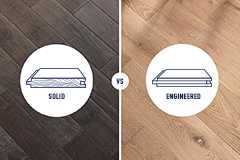 Solid vs Engineered Hardwood Flooring
Solid vs Engineered Hardwood Flooring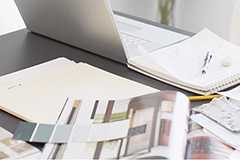 Guide To Choosing a Hardwood Floor
Guide To Choosing a Hardwood Floor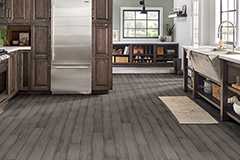 Hardwood Flooring Room Inspiration Guide
Hardwood Flooring Room Inspiration Guide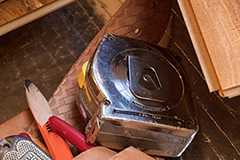 10 Things to Know About Hardwood Floor Installation
10 Things to Know About Hardwood Floor Installation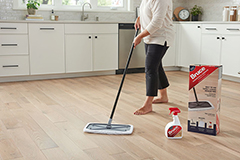 How To Clean and Protect Hardwood Flooring
How To Clean and Protect Hardwood Flooring